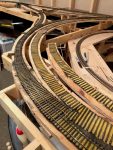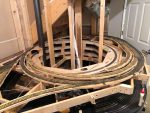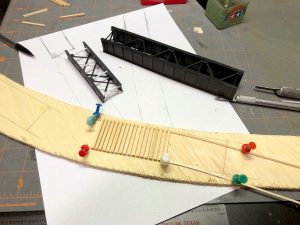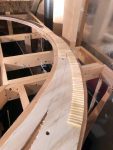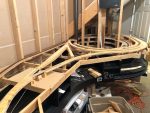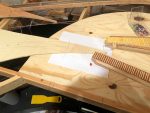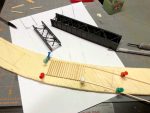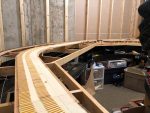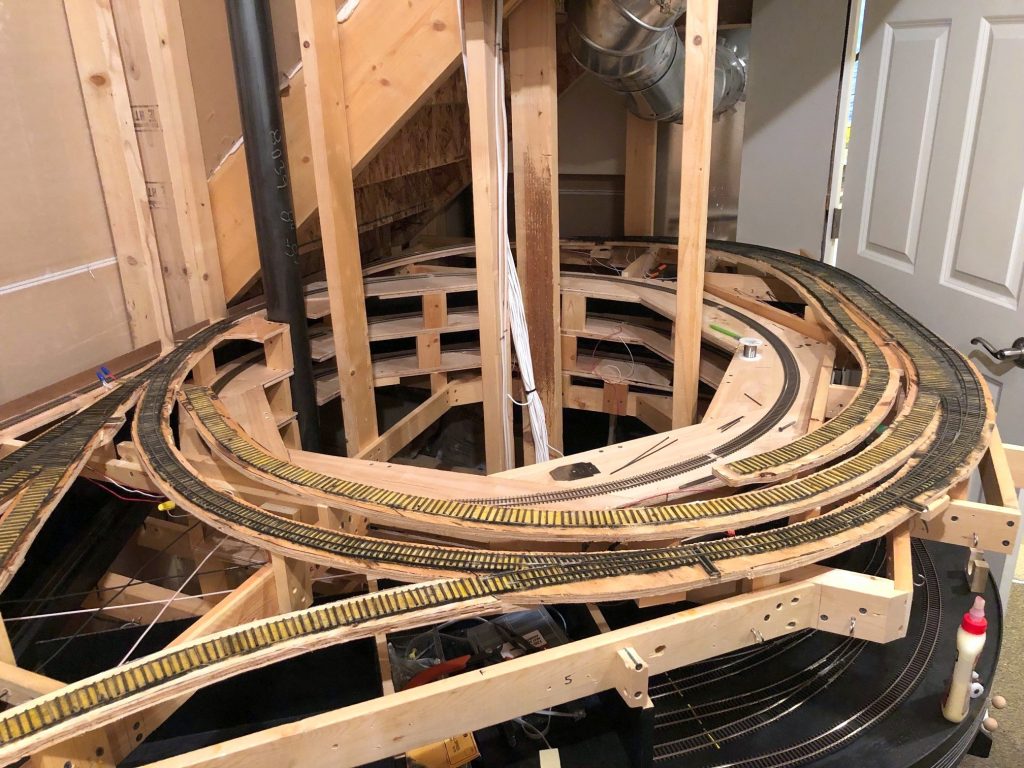
Celebrated something of a mini golden spike this week. I completed the mainline track for the Mayflower leg of the wye in St Charles. With this bit of track installed, trains can finally run up from the staging level and to a tipple (Mayflower). It’s not much in the grand scheme of things, but its a milestone nonetheless. Next will come the Monarch leg of the wye with its house track and engine track followed by the two yard tracks above the wye. Getting pretty close to having all the track on the main level installed.
I learned a good lesson on hand-laying track. The frog needs to be electrically isolated by cutting the rails on either side of the frog. To keep the frog and rails aligned, I spike both sides of the cut before cutting. When I wired everything up and applied track power the first time in this new section, it immediately shorted out. I could hear a soft click coming from one of the switches. Usually this means one to three things 1) I wired a feeder to the wrong bus, 2) my cut didn’t make it all the way through or 3) the point rails somehow slid back together with the frog. A check of all three of these things was good, but when I dropped the feeders from the point rails, the short cleared–it was still somewhere on this switch. After a few minutes of jiggling random things and staring at the problem, I finally figured out that two of the spikes that were holding separate point rails down near the frog cut were touching even though the rails weren’t. Go figure, metal spikes attached to metal rails conduct electricity… a quick repositioning of one of the offending spikes did the trick.
